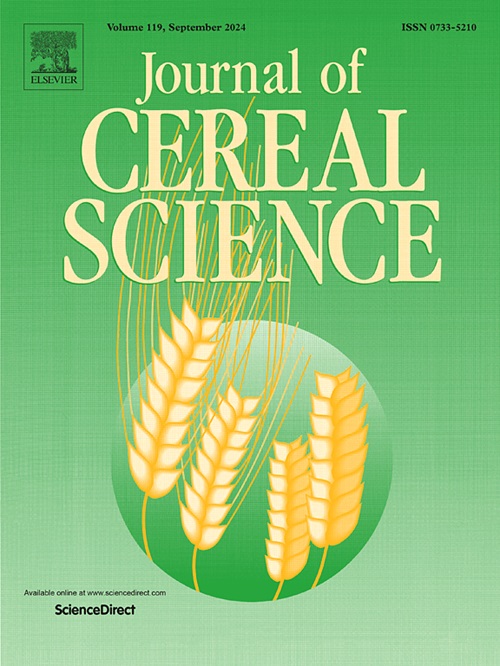Development of ready-to-eat cupcakes with high selenium and zinc content using biofortified refined wheat flour
IF 3.9
2区 农林科学
Q2 FOOD SCIENCE & TECHNOLOGY
引用次数: 0
Abstract
This study aimed to create regular-eating, zinc- and selenium-rich cupcakes by enriching biofortified wheat flour. For this purpose, five ratios of biofortified refined wheat flour containing zinc (FZn) and zinc + selenium (FZnSe) were incorporated into conventional cupcake flour. FZn had a substantially greater zinc content (12.0 mg kg−1 and 4.5 mg kg−1) than cupcake flour. Additionally, the zinc and selenium concentrations of the FZnSe were relatively high (11.54 mg kg−1 and 192.5 μg kg−1). The zinc content of the cupcakes rose by 35.9% and 44.6% (4.46 mg kg−1 to 5.84 mg kg−1) with the implementation of FZn. Following the FZnSe replacements, the zinc content of cupcakes increased from 24.3 to 80.24% (4.03 mg kg−1 and 5.84 mg kg−1) and their selenium content increased from 48.1 to 155.0% (between 62.7 μg kg−1 and 107.9 μg kg−1). All substitutions of FeZnSe cupcakes indicated comparable weight, height, and top and bottom diameters compared to the control cupcakes. Only the cupcakes containing FZn had a 1–2 mm decrease in bottom diameter and a 0.5–1.5 mm increase in height. Apart from the hardness value, the physicochemical properties of biofortified cupcakes were mostly similar to control. Almost all sensory attribute scores for both cakes resembled those of the control cupcakes.

本研究旨在通过富集生物强化小麦粉,制作出富含锌和硒的普通食用纸杯蛋糕。为此,在传统纸杯蛋糕面粉中添加了五种比例的含锌(FZn)和锌+硒(FZnSe)生物强化精制小麦粉。FZn 的锌含量(12.0 毫克/千克-1 和 4.5 毫克/千克-1)大大高于纸杯蛋糕面粉。此外,FZnSe 的锌和硒含量也相对较高(分别为 11.54 毫克/千克和 192.5 微克/千克)。使用 FZn 后,纸杯蛋糕中的锌含量分别增加了 35.9% 和 44.6%(4.46 毫克/千克-1 至 5.84 毫克/千克-1)。替代 FZnSe 后,纸杯蛋糕的锌含量从 24.3% 增加到 80.24%(4.03 毫克/千克-1 至 5.84 毫克/千克-1),硒含量从 48.1% 增加到 155.0%(62.7 微克/千克-1 至 107.9 微克/千克-1)。与对照纸杯蛋糕相比,所有替代的硒化铁纸杯蛋糕的重量、高度、顶部和底部直径都相当。只有含有 FZn 的纸杯蛋糕底部直径减少了 1-2 毫米,高度增加了 0.5-1.5 毫米。除硬度值外,生物强化纸杯蛋糕的理化特性大多与对照组相似。这两种蛋糕的几乎所有感官属性得分都与对照组纸杯蛋糕相似。
本文章由计算机程序翻译,如有差异,请以英文原文为准。
求助全文
约1分钟内获得全文
求助全文
来源期刊

Journal of Cereal Science
工程技术-食品科技
CiteScore
7.80
自引率
2.60%
发文量
163
审稿时长
38 days
期刊介绍:
The Journal of Cereal Science was established in 1983 to provide an International forum for the publication of original research papers of high standing covering all aspects of cereal science related to the functional and nutritional quality of cereal grains (true cereals - members of the Poaceae family and starchy pseudocereals - members of the Amaranthaceae, Chenopodiaceae and Polygonaceae families) and their products, in relation to the cereals used. The journal also publishes concise and critical review articles appraising the status and future directions of specific areas of cereal science and short communications that present news of important advances in research. The journal aims at topicality and at providing comprehensive coverage of progress in the field.
 求助内容:
求助内容: 应助结果提醒方式:
应助结果提醒方式:


